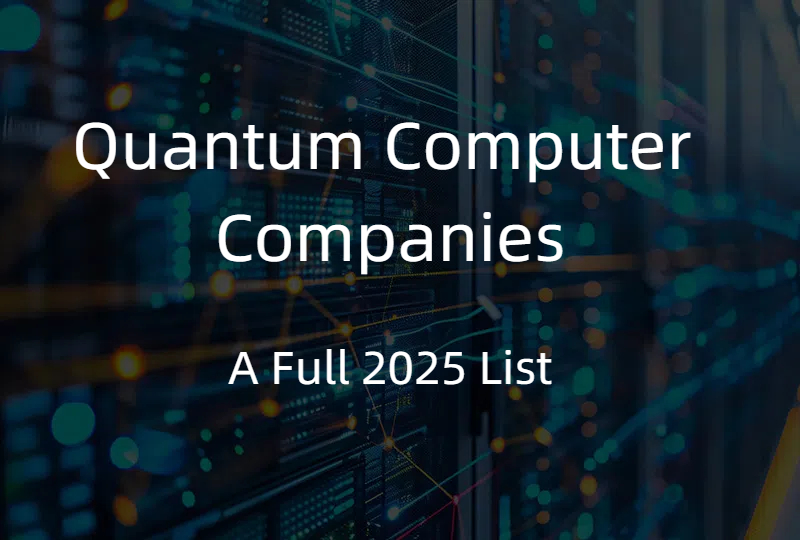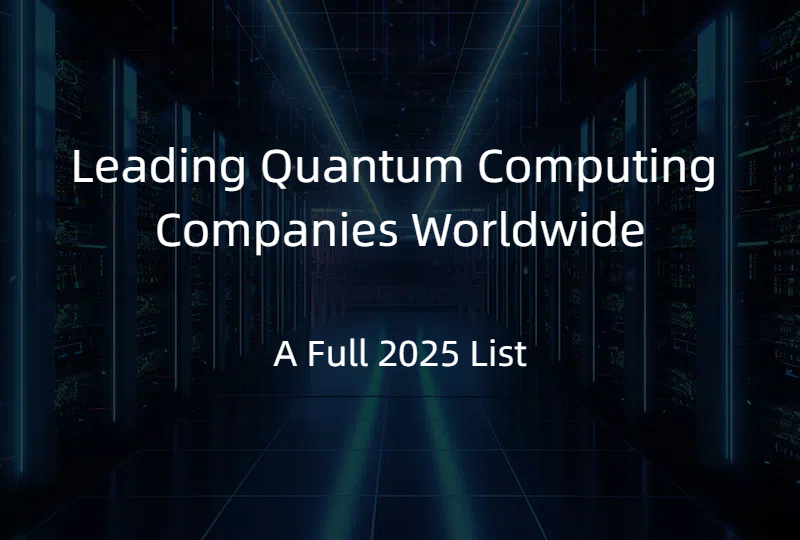The 2025 Nobel Prize in Physics: Quantum Mechanics Brought to the Macroscopic Scale
2025.10.31 · Blog Nobel Prize in Physics 2025
Recognition of Groundbreaking Quantum Achievement
The 2025 Nobel Prize in Physics has been awarded jointly to John Clarke, Michel H. Devoret, and John M. Martinis "for the discovery of macroscopic quantum mechanical tunnelling and energy quantisation in an electric circuit." This prestigious recognition celebrates four decades of transformative work that has fundamentally reshaped our understanding of quantum mechanics and laid the essential groundwork for modern quantum computing technologies.
The award, which carries a monetary prize of 11 million Swedish kronor (approximately $1.2 million) shared equally among the three laureates, will be formally presented at a ceremony in Stockholm on December 10, 2025. This recognition marks a significant moment in the International Year of Quantum Science and Technology, underscoring the profound importance of quantum mechanics to contemporary science and technology.
The Laureates and Their Achievements
John Clarke, born in 1942 in Cambridge, UK, is an emeritus professor at the University of California, Berkeley. Michel H. Devoret, born in 1953 in Paris, France, currently serves as the Chief Scientist of Quantum Hardware at Google's Quantum AI team and is also a professor at UC Santa Barbara. John M. Martinis, born in 1958, is a professor at UC Santa Barbara and served as the former hardware leader at Google Quantum AI before co-founding Qolab, where he serves as Chief Technology Officer.
Their collaboration represents a bridge between fundamental physics and practical quantum technology. John Clarke reflected on receiving the award, stating, "To put it mildly, it was the surprise of my life. I am completely stunned. It had never occurred to me that this might be the basis of a Nobel prize." Clarke further emphasized the significance of their work: "The basis of quantum computing relies to quite an extent on our discovery."
The Seminal 1984-1985 Experiments
The foundation for this Nobel Prize rests on a series of meticulous experiments conducted in the mid-1980s at the University of California, Berkeley. In 1984 and 1985, Clarke, Devoret, and Martinis demonstrated a principle that challenges our intuitive understanding of the physical world: that quantum mechanical phenomena, long thought to be confined to the realm of atoms and subatomic particles, could be revealed and manipulated in macroscopic electrical circuits.
Their experimental approach was elegant yet groundbreaking. The team constructed a superconducting electrical circuit consisting of two superconductors—materials that conduct electricity without any resistance when cooled to extremely low temperatures—separated by an ultra-thin insulating layer known as a Josephson junction. This configuration proved to be the key to observing macroscopic quantum effects.
The Josephson junction, named after British physicist Brian Josephson, allows Cooper pairs (pairs of electrons that move together as bosons) to tunnel through the insulating barrier. This phenomenon creates conditions where macroscopic quantum states can emerge, allowing an entire system of many billions of electrons to behave as a unified quantum entity.
Quantum Tunnelling and Energy Quantization
The laureates' experiments demonstrated two remarkable phenomena. First, they observed quantum tunnelling at the macroscopic scale—the system could transition from its stable zero-voltage state to a state with measurable voltage without classical energy to make this transition. This demonstrated that quantum tunneling, previously observed only in microscopic systems, could operate in a measurable electrical circuit large enough to hold in one's hand.
Second, they showed energy quantization in the electrical circuit. Rather than absorbing and emitting energy continuously as classical physics predicts, the system absorbed and emitted energy only in discrete amounts or quanta, precisely as quantum mechanics theory predicted. This observation confirmed that macroscopic quantum systems followed the same fundamental rules as microscopic ones.
As explained by Göran Johansson, a member of the Nobel Committee for Physics: "There is no advanced technology today that does not rely on quantum mechanics. The three laureates took quantum tunnelling from the microscopic world and onto superconducting chips, allowing physicists to study quantum physics and ultimately create quantum computers."
From Fundamental Physics to Quantum Computing
While the 1984-1985 experiments were primarily investigations into fundamental quantum physics, their practical implications have proven extraordinary. The principles demonstrated by Clarke, Devoret, and Martinis form the theoretical foundation upon which modern superconducting quantum computing rests.
Superconducting qubits, the quantum bits used in today's leading quantum computers, directly utilize the Josephson junction principle that the laureates pioneered. These qubits leverage the quantized energy levels demonstrated in the Nobel laureates' experiments to encode quantum information. Companies such as Google, IBM, and others have built quantum processors containing hundreds of superconducting qubits based on these principles.
Martinis, in particular, played a direct role in translating these fundamental discoveries into quantum computing applications. He led Google's quantum computing development team, which famously demonstrated "quantum supremacy" in 2019 with Google's Sycamore processor. His work directly employed the energy quantization principles he and his colleagues had originally demonstrated in 1985.
Superconducting Qubits: Technology Overview
Superconducting qubits operate by encoding quantum information in superconducting circuits cooled to temperatures near absolute zero (typically below 20 millikelvin). The Josephson junction forms the heart of these qubits, creating a nonlinear inductance that enables quantum phenomena such as superposition and entanglement.
The key advantages of superconducting qubits include their scalability—fabrication techniques similar to those used for classical semiconductor chips allow multiple qubits to be created on a single substrate—and their relatively fast gate operations, which occur on nanosecond timescales. Companies have demonstrated quantum processors with over 100 qubits, with some systems reaching 256 qubits or more.
However, these systems face significant challenges. Decoherence, caused by environmental interactions disrupting the delicate quantum states, remains a major issue. Additionally, the requirement for extreme cryogenic temperatures adds substantial complexity and cost to quantum computing systems. Despite these challenges, superconducting qubits remain the most commercially advanced quantum computing technology currently available.
Broader Impact on Quantum Technology
The potential economic and scientific implications of the laureates' work extend far beyond quantum computing. According to the World Economic Forum, quantum technologies based on these principles—including quantum computing, quantum sensing, and quantum communication and security—could generate economic value between $900 million and $2 trillion by 2035.
Quantum computers built on superconducting qubits are being explored for applications in drug discovery, materials science, optimization problems in finance and logistics, cryptography, and artificial intelligence. Quantum sensors based on Josephson junctions have already found practical use in precision measurement applications.
Historical Context and Predecessors
The Nobel Committee acknowledged that the work of Clarke, Devoret, and Martinis built upon foundations laid by previous Nobel laureates. John Clarke noted that their work was "made possible by the work of Anthony Leggett and Brian Josephson – who laid the groundwork for their work on tunnelling in superconducting circuits." Leggett and Josephson had previously won Nobel Prizes for their contributions to understanding superconductivity and the quantum tunnel effect.
Conclusion
The 2025 Nobel Prize in Physics represents recognition of one of the most consequential discoveries in modern physics: that quantum mechanics operates at scales far larger than previously demonstrated, and that this macroscopic quantum behavior can be harnessed for practical technological applications. From fundamental physics experiments conducted four decades ago, Clarke, Devoret, and Martinis have catalyzed a revolution in quantum technology that continues to accelerate.
Their work demonstrates how curiosity-driven fundamental research, pursued without immediate practical application in mind, can ultimately transform entire industries. As quantum computing and other quantum technologies continue their rapid development, the foundational achievements of these three laureates will remain central to the field. Their recognition comes at an opportune moment, as the world increasingly recognizes quantum technology as essential infrastructure for future scientific and economic development.
Featured Content






